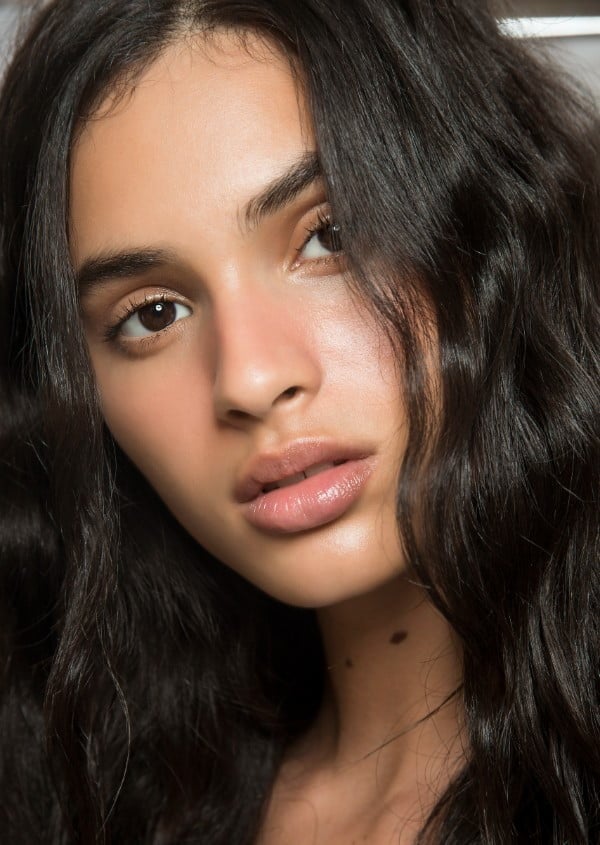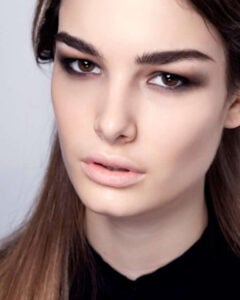
Photo: ImaxTree
The term ‘olive skin’ has been used to describe a wide range of complexions. Though tan and olive are often confused, the former is more neutral and much less orange⎯ it also isn’t acquired through spending time with the sun, you either have it or you don’t! Olive-skinned people have a relatively neutral undertone, though it does range slightly. Because of this undertone, olive skin is prone to discoloration and hyperpigmentation quite easily. If you think you might have this skin tone, it is useful to understand what its features are, the difference in undertones of olive skin, and the shades that complement said undertones!
WHAT IS OLIVE SKIN?
There are two key features to understanding what is olive skin that make it different from the others, and may help you to understand if this is your skin tone too. Firstly, olive skin rarely burns⎯ if you spend a lot of time in the sun but never seem to peel or turn red like your pale-skinned counterparts, this could be your skin type. Second characteristic: olive skin tans easily. Though certainly, tanning easily differs person to person, universally, tan skin gets darker quicker. Along with this, olive skin tends to be oilier and prone to hyperpigmentation.
WHERE DOES OLIVE SKIN COME FROM?
To be honest, figuring out where olive skin comes from is not so simple. Though most people confuse a sun-kissed tan with olive skin, they are not the same! Olive skin is natural and has a slightly green tone⎯ hence the name olive. Ethnically, olive skin is common in the Mediterranean, Latin American regions, northern Africa, along certain portions of Asia as well. The Fitzpatrick scaled breaks down the skin colors based on pigmentation and helps to uncover how olive skin has variations in it too. The lightest, Type III, may be prone to mild burns but still, tans, though slower than other olive shades. Type IV is the poster-boy of olive skin⎯ rarely burns but easily tans! This one is most common among Meditteranean ethnicities but also found in Asia and Latin America. Lastly, Type V, the darkest olive tone tans even more easily, and burns even more rarely. This is most common among people from the Middle East and the Indian subcontinent.
WHAT UNDERTONES DOES OLIVE SKIN HAVE?
Just like all skin tones, olive skin can have a variety of different undertones. Knowing your undertones helps to choose which shades of jewelry and makeup will complement your skin best! All olive skin tends to be on the more neutral end⎯ this means overly yellow or overly pink colors will not suit the skin. You may find that your undertone is cooler, or warmer, though overall still in the neutral range. This can be determined by checking the color of your veins⎯ if they are purple or blue, you have cooler undertones. Alternatively, if they are greener, this means you have warmer undertones. Remember the hint of green we mentioned makes olive skin so special? That undertone will make it hard to really tell if you are on the warmer or cooler end most of the time, and it’s what makes you fall into the neutral range.
MAKEUP FOR OLIVE SKIN
Below we look at some of the best makeup colors for olive skin tones
EYE MAKEUP FOR OLIVE SKIN
Though playing around with fun bold colors is a look in itself, most tend to stay towards natural colors they can wear for everyday use. If you fall into this group, it is useful to learn what eyeshadow shades will suit olive skin best. By far, bronze and gold shades complement olive skin best! They highlight the contour of the eye beautifully, and a light shimmer from gold can truly bring the eyes out in a subtle, sparkly manner. If you like to do a smoky eye or apt for darker or brighter colors on the eyes, there are still many that suit olive skin with absolute grace. A dark royal blue, deep rich purple, or emerald green can also look great.
BLUSH FOR OLIVE SKIN
Blush can be hit-or-miss, and this often leads people to exclude it out of their makeup routine as a whole. If you choose the right shade, it can be the perfect addition to your look to warm the face up⎯ something useful since olive skin tones tend to be on the neutral end. Instead for going for an overly pink shade, opt for a peach shade. Peach tends to suit neutral undertones best!
LIPSTICK FOR OLIVE SKIN
One general rule of thumb for olive skin: the nude shade is not usually your best friend on lips. Getting a completely nude shade will merge into your natural shade and not give it that subtle color it gives on others⎯ olive skin is already a neutral base, so a neutral lip won’t give the color you’d want. You may choose a dulled down pink, or another colored nude lip shade, that can still give the lips some color. As for bold lips, one of the perks of having the neutral in-between skin tone is that most colors suit the lips⎯ try as many as your heart desires!
CONCEALER & FOUNDATION FOR OLIVE SKIN
Foundation and concealer are some of the basics of makeup⎯ they can also make or break your look based on if you choose the right shade. Neutral undertone products are your best friends here, but you may also want to choose a slightly warmer shade since olive skin tans easily. In addition, a slightly warmer-toned foundation can warm up the olive skin. The key here is to still chose a warm-olive foundation or concealer, not just a warm or golden one without neutral or olive undertones. The latter will end up looking orange, and won’t blend as well!
FINAL THOUGHTS
Olive skin is ambiguous in the best way. You get to choose how you present yourself, with a neutral canvas that all colors seem to suit well. Knowing your skin tone is the first step to knowing what makeup products suit you, and this is only emphasized with the knowledge of undertones. All olive-skinned beauties deserve knowing how to show off their beautiful skin best!


